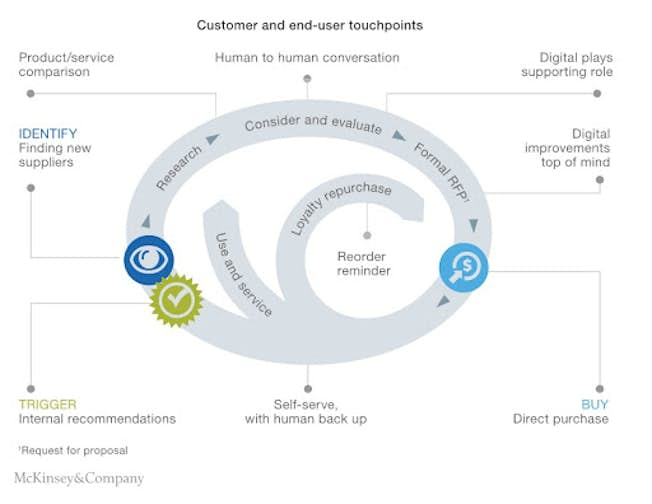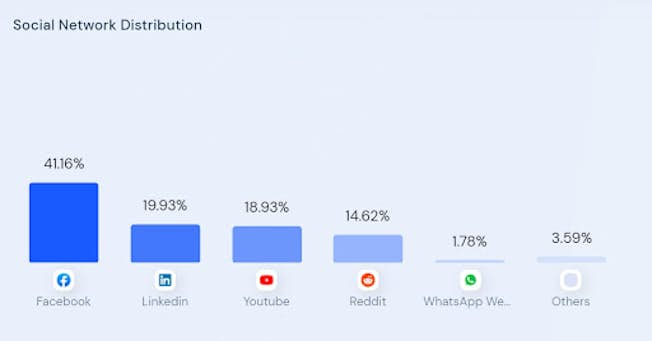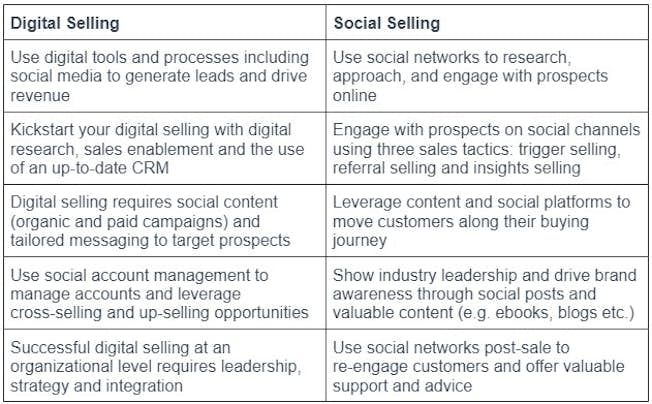In recent years there’s been a huge buzz around social selling. Tipped as the future for sales professionals, its impact has been significant. Since its introduction, social selling has offered new ways for salespeople to research, approach, and engage with prospects. But what about the bigger picture?
For sales professionals and organizations alike, digital selling is emerging as a new and increasingly exciting concept. As the father of social selling (in the sense that social selling makes up just one piece of the overall digital sales process pie), digital selling has the enormous potential to transform a team or organization into a lean, mean selling machine.
So, how should we approach the concept of digital sales?
What is digital marketing today? We don't say 'social marketing' because we use more than just social media platforms to reach and engage with our target audience. Digital marketing encompasses a huge range of elements including PPC, SEO, analytics, mobile, email, display, and the rest, to build brand awareness.
In much the same way, digital selling is about using social media platforms for your business (social selling), as well as a variety of other digital tools, and processes, to sell and ultimately drive revenue. Let’s investigate this concept and see how it can enhance engagement and drive sales.
What's the bigger picture for digital sales?
To outline the importance of digital, and indeed social selling in today's climate, here are some statistics you should be aware of:
- According to LinkedIn 73% of salespeople use sales technology to close more deals
- Social selling leaders create 45% more opportunities than peers with a lower Social Selling Index
- Social selling leaders are also 51% more likely to reach their quota
- More than half of professionals stated that a business executive’s presence on social media positively influences their purchase decision
- 66% of professionals said they would be more likely to recommend a company or brand if they followed a company executive on social media
With these types of digital and social selling facts to draw from, it's no surprise that many sales professionals are playing catch up to hone their online skills.
Digital vs. social selling
For traditional selling, sales professionals relied on lists that were purchased and generally included unqualified data, contact was made using cold calling followed by making an appointment which forced targets into a sales cycle using scripted selling that often involved a lack of listening.
In comparison, a digital or social seller listens and shares so they can help the target connect to better engage, understand the challenges and issues a prospect may face and support prospects to find solutions. Digital selling involves a range of strategies to create a well-oiled machine that works together to achieve one overall marketing goal. The elements involved include:
- Digital Research: Starting with a view of the customer, you need to research both digitally and socially to identify market trends and influencing factors affecting customers within your industry.
- Sales Enablement: Using digital research in tandem with social tools and platforms to target key decision-makers and capture vital information for the CRM.
- CRM: Managing and analyzing customer interactions and data throughout the customer lifecycle to improve business relationships.
- Social Content: Interacting and engaging with prospects through the leverage of social media channels and targeted social campaigns.
- Digital Sales Messaging: Optimizing the sales message to suit the needs and desires of your target consumers.
- Engagement: Identifying KPIs and leveraging them to spark positive customer engagement.
- Social Account Management: Using the post-sale process to manage accounts socially and digitally to leverage cross-selling and up-selling opportunities.
- Digital Sales Leadership: Taking charge of all digital sales efforts and initiatives and steering your organization in the right direction.
- Strategy & Integration: Ensuring all of your business's digital marketing strategies interlink and are in continuous alignment.
As a branch of digital sales, in social selling, sellers use peer-to-peer social networks to meet a buyer at a precise time during their buying journey and make conversions by helping them through the process through three main sales tactics:
- Trigger selling: create conversions by triggering a customer's impulses
- Referral selling: acquire new customers through consumer referrals
- Insights selling: generate leads and sales by becoming a B2B influencer
In essence, social selling is about leveraging content and social platforms to drive the next steps for the buyer, as well as building your brand and developing meaningful relationships with potential and existing buyers. Social selling focuses solely on the social aspects of digital marketing and is a key piece of the digital sales pie.
Digital Selling - Combine Human and Digital?
When it comes to sales, be aware that some customers want a digital and human touch on their journey. For B2B customers, many want human interaction at the start of the journey and are happy to rely on digital interactions for the end.
This illustration from McKinsey gives an overview of the touchpoints involved. It’s about understanding the points where a customer requires human interaction and those that are better served by digital technologies and processes.

Digital Sales in Action - Brand Example
A great example of digital selling in action is global maintenance and repair supplies Fortune 500 company, Grainger.
In the early 90s, they embraced digital with an e-catalog on CD-ROM and evolved to see three-fourths of their orders come from digital channels (e.g. website, EDI and e-procurement and KeepStock inventory services). That’s 71% of orders through its digital channels, with the remaining 29% through physical branches and via the phone.
Grainger also has two online businesses - Monotaro for the Japanese market, and Zoro Tools in the United States. Known as Grainger’s ‘single channel’ and ‘endless assortment’ businesses, they are approaching $2 billion in combined sales up nearly 20 percent year-on-year.
It also uses a variety of social media channels to drive traffic to its main site leading with Facebook and LinkedIn.

Another example is IBM, which wanted training for the sales team in using digital channels effectively. By offering a customized social selling program developed with DMI, the tech giant saw a 37% decrease in days to close digital sales, 132%+ digital skills increase, and trained 4,000 marketers across 23 countries.
Digital and social selling is the key to driving digital sales
While social selling is a critical part of digital selling, particularly in the modern world, social selling techniques alone won't get you the success you deserve.
Digital selling evolves all the time. Essentially, it's the process of engaging with business and social networks online, as well as utilizing all the digital sales tools at your disposal to drive more sales opportunities.
Now a critical part of any sales process, digital selling involves creating an organizational structure around your content, as well as a whole ecosystem to measure the content consumption of your audience.
By leveraging all of the digital assets available and using them in an intelligent way, your organization stands a real chance of making a mark with potential partners and customers alike.
A Summary: Digital Selling & Social Selling
Here’s a summary of the benefits of digital selling and social selling for your sales team and business:

Excel at Digital Selling to Generate Leads & Drive Sales
Find, target, attract and engage new and existing customers with clever online sales tactics. DMI’s Digital & Social Selling Course will help you understand how and where to find prospects, close sales, and build meaningful relationships using a range of digital channels, tactics, and tools. Start your online sales career today!
Updated 2022
Related
- Categories:
- Articles
- Social Selling
Upgrade to Power Membership to continue
your access to thousands of articles, toolkits, podcasts, lessons and much much more.
Become a Power Member- Login
- View Courses
- - - -
- Courses
- Resources
- - - -
- My Account
- Change Password
- Logout




